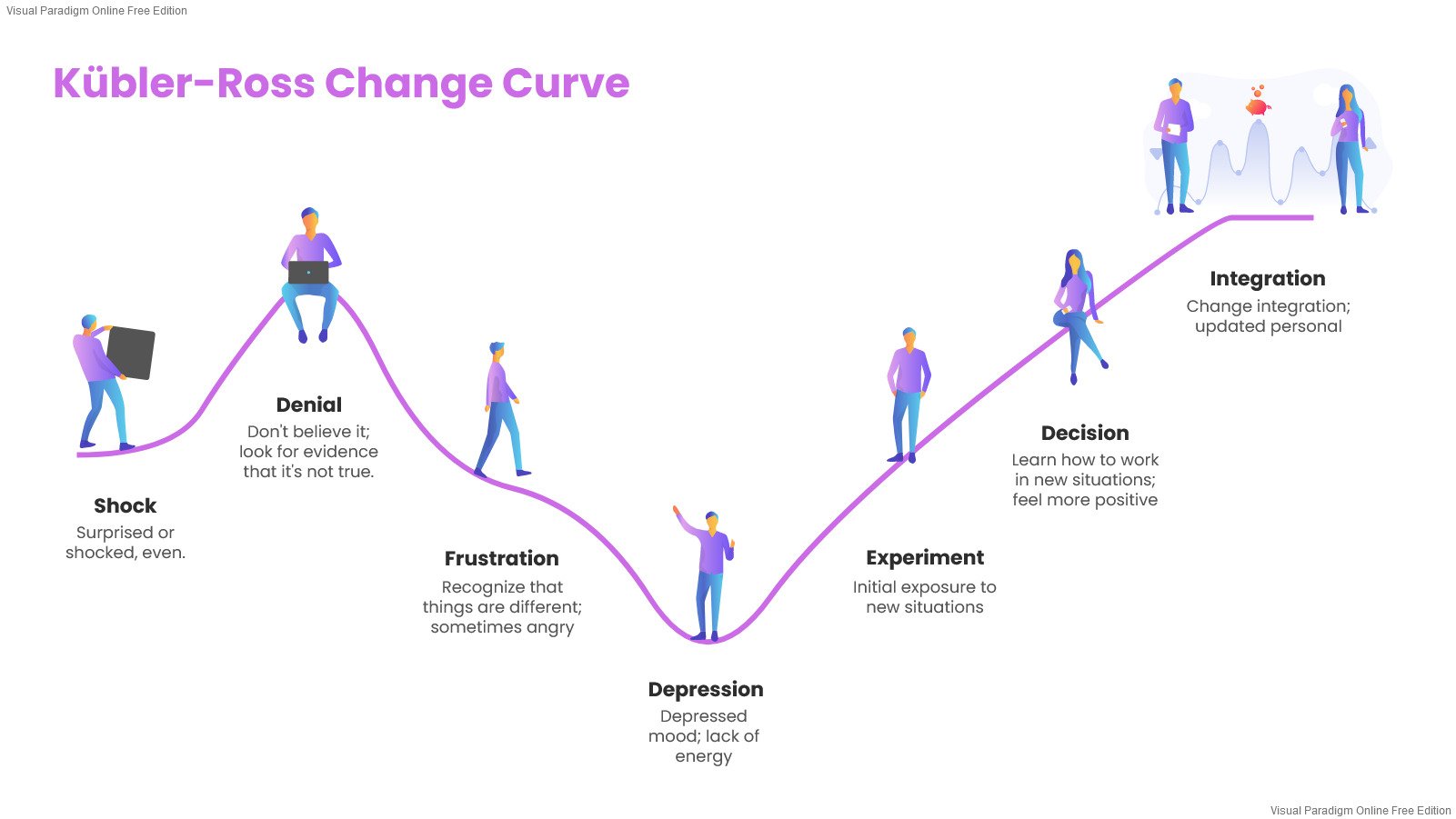.jpg)
Redundancy News RecruitmentPlus
In 1969, Elisabeth Kübler-Ross described five common stages of grief, popularly referred to as DABDA. They include: Denial. Anger. Bargaining. Depression. Acceptance. A Swiss psychiatrist, Kübler-Ross first introduced her five stage grief model in her book On Death and Dying. Kübler-Ross' model was based on her work with terminally ill.
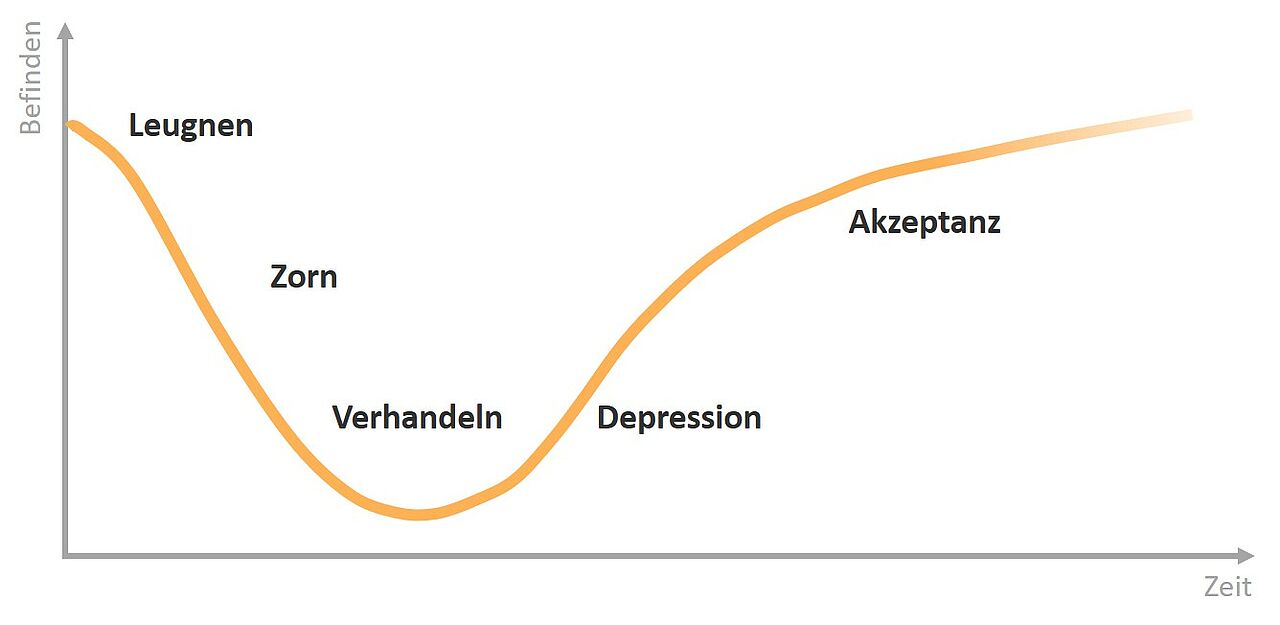
Die ChangeKurve Warum ein Modell zur Sterbebegleitung in der Organisationsentwicklung Einzug
Advantages of Kubler-Ross Change Curve. Some of the advantages of using this model to understand and manage change include: Predictability: The model provides a predictable framework for how people react to change, which can help managers and leaders anticipate and manage the challenges that come with change. Communication: The model provides a.

Von der Kunst, Menschen die Veränderung zu erleichtern
The Change Curve is derived from the Kübler-Ross model, also known as the Five Stages of Grief. It was originally developed in the 1960s by Swiss-American psychiatrist Elisabeth Kübler-Ross to show how terminally ill patients cope with their impending deaths. However, later the model was modified to depict how people deal with loss and grief.

Was tun bei Widerstand gegen Veränderungen? Rödl & Partner
Elisabeth Kübler-Ross interviewing a woman with leukaemia in Chicago in 1969, with seminar participants behind a one-way mirror. The part of it that stuck in the public imagination was the idea.

Natural Human Response to Change
The Kubler-Ross Change Curve can be effectively used by business leaders across the world to help their workforce adapt to change and move towards success. In this article, we explore 1) what is Kubler-Ross Model, 2) the applications of the Kubler-Ross Change Curve, and 3) variations of change curve concepts. WHAT IS KUBLER-ROSS MODEL?

KublerRoss Change Curve Cheryl Lynn Eaton
Our new series of Video tutorials starts with understanding the initial dimensions of change using the famous Elisabeth Kübler-Ross model

Free KüblerRoss Change Curve Change Management Tool download for leaders FarWell
The Kübler-Ross change curve has been used to analyse change processes in HE by Herrera et al. (2020) and Rodriguez-McClellon (2020), while Malone (2018) uses it to explain students' resistance.

Blue Change Die Giraffe und die Change Kurve
The Kübler-Ross Change Curve is derived from her 1969 book On Death and Dying, and details the different emotional stages an individual goes through when they are confronted with dramatic change, such as being made redundant or being asked to take on a different role at work as part of a restructure. The curve outlines seven stages in the.
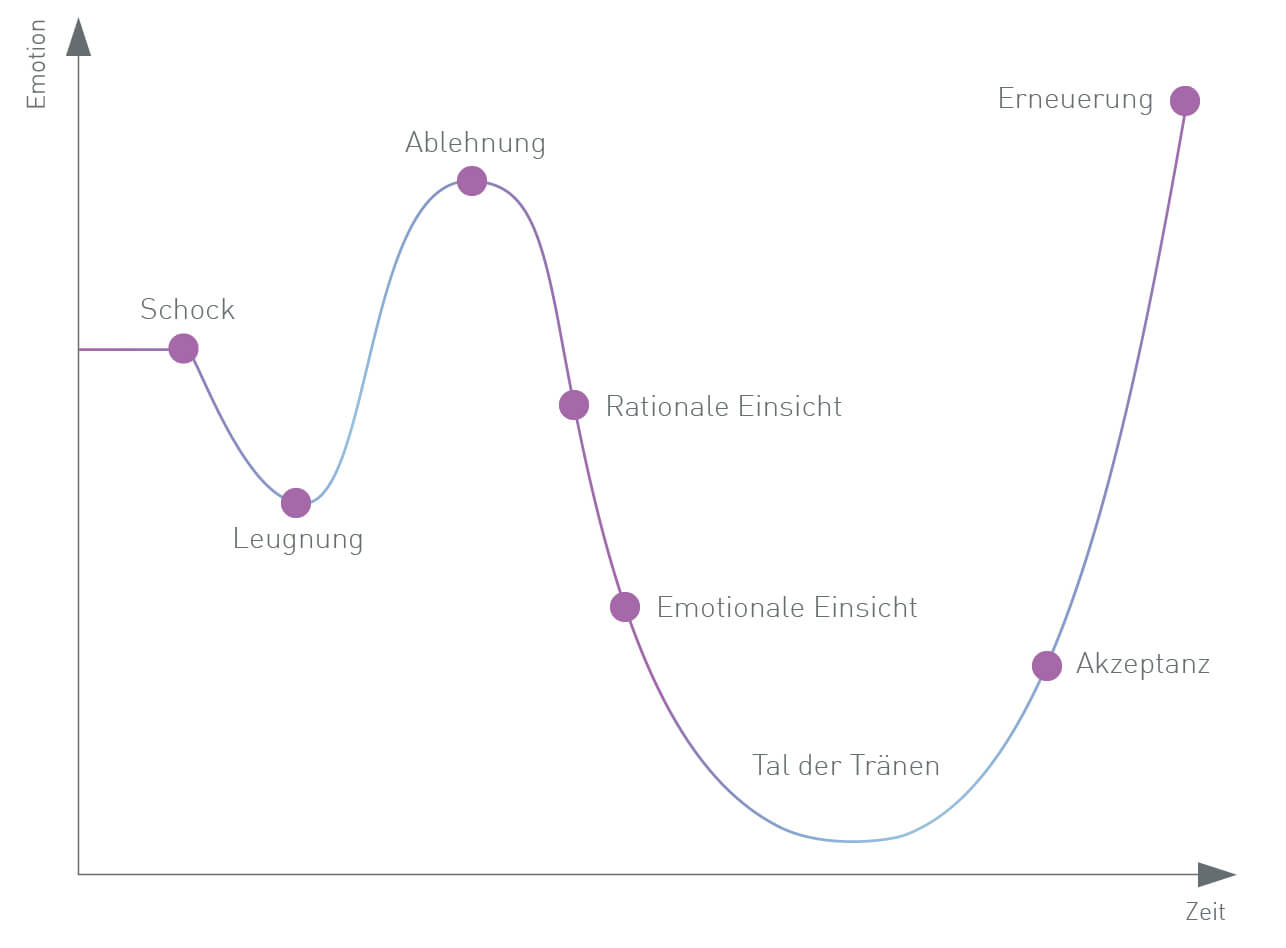
Realitycheck Zeit für ein Zwischenfazit meiner LifeBalance
Kübler-Ross' Five Stage Change Curve Model is a popular method of understanding the process of change and how people respond to it. The model was developed by Swiss-American psychiatrist Elisabeth Kübler-Ross, who first presented her ideas during a conference in 1969 after working with terminally ill patients for many years.

Change Kurve KüblerRoss Change Curve™ EKR Foundation / Bedarf (anzahl personen) pro
Elisabeth Kübler-Ross was a Swiss-American psychiatrist and an international best-selling author. In 1969 she presented her theory on the five stages of grief, known as the 'Kübler-Ross model.

Managing Grief, Loss, and Change
The change curve is based on a model of the five stages of grief -denial, anger, bargaining, depression and acceptance-originally described by Elisabeth Kübler-Ross in her 1969 book On Death and Dying.
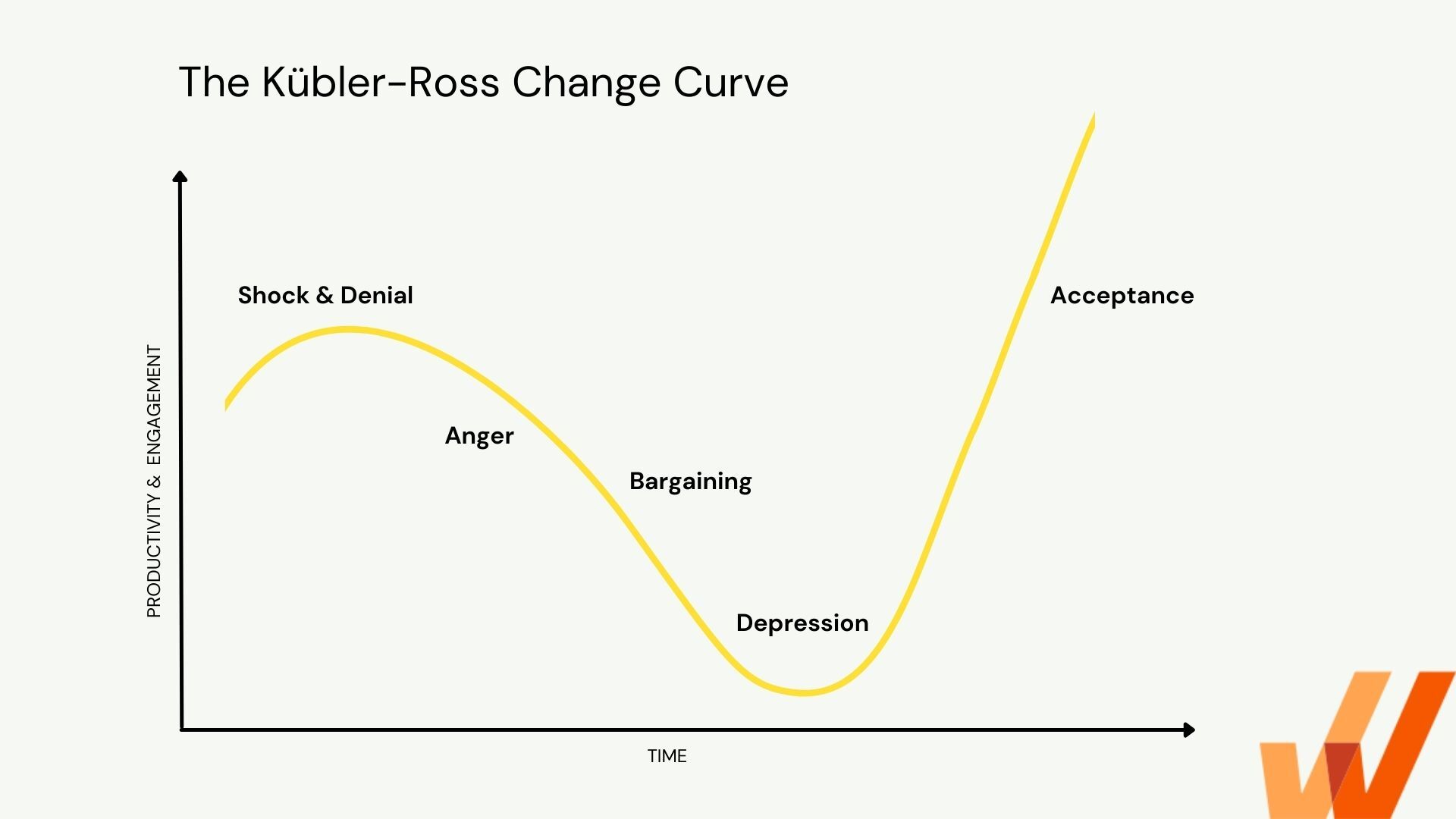
Understanding The Kubler Ross Change Curve Change Management Change My XXX Hot Girl
Kübler-Ross Change Curve The Kübler-Ross Change Curve is helpful in understanding reactions and feelings in relation to change. It assists people in plotting their individual reactions and to engage in discussion to assist them to address their concerns and maximise their contribution. Shock - losing focus Numbness daze Turbulent time
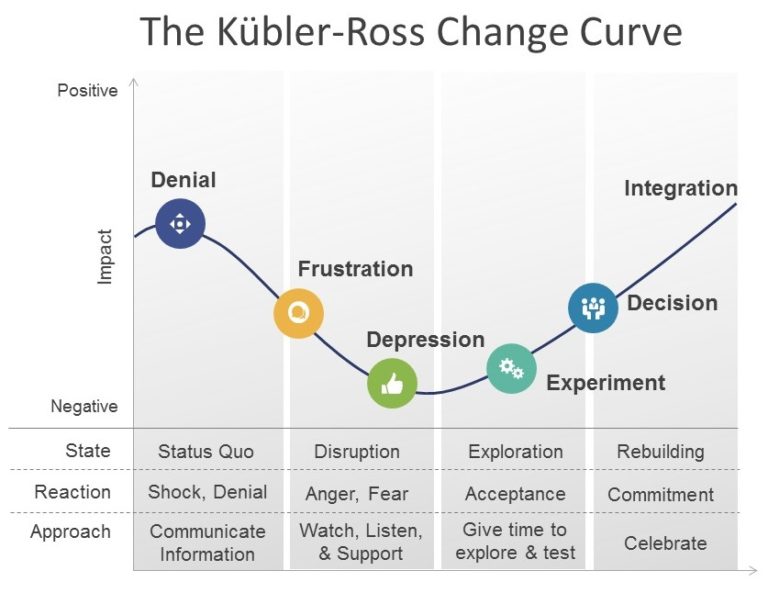
Change Leadership Helping people adapt to a change initiative
The Kübler-Ross Change Curve™, also known as the Kübler-Ross Model, is an effective tool business owners and managers can use to understand these natural reactions to change. Read on to learn more about the stages of accepting change so you can lead your team toward enhanced productivity and continued success in an ever-evolving business landscape.

The KublerRoss Change Curve How 7 Stage Module Affects FastGrowing Startups Kandidate Blog
What Is the Change Curve? The Change Curve, or Kübler Ross' Change Curve Model, was created by the Swiss-American psychiatrist Elisabeth Kübler-Ross in 1969. It depicts 5-stages of grief denial, anger, bargaining, depression, and acceptance.

KublerRoss Change Curve BIM 4 Housing Blackbox
The Kubler-Ross Change Curve model has been accepted worldwide to explain the change process. As the basic human emotions experienced during personal loss, change, death, or a dramatic experience remain the same, this model can be applied effectively in such situations. Kübler-Ross Change Curve®

Kubler Ross Change Curve Images and Photos finder
Stage 1: Shock In this initial stage, employees will be in a position of shock and perhaps won't be able to process the fact that they will have to undergo a change and adapt to something new. Once the numbness and shock wear off, people often resist engaging with the change, trying to prove that the change is either unreal or unnecessary.